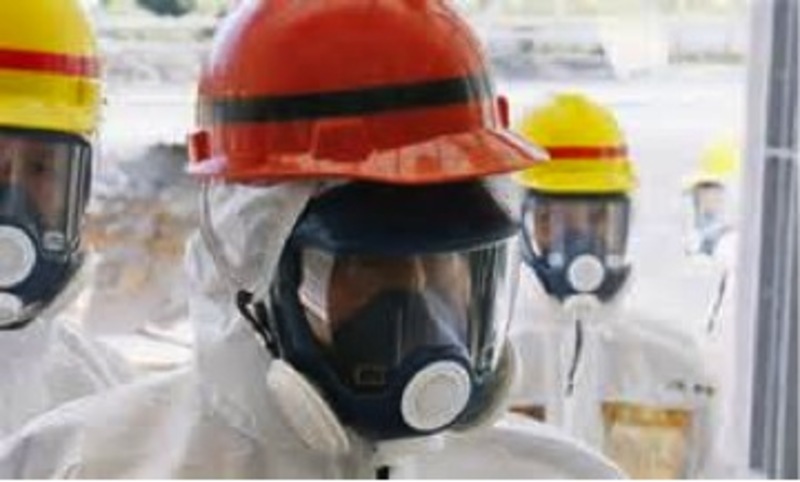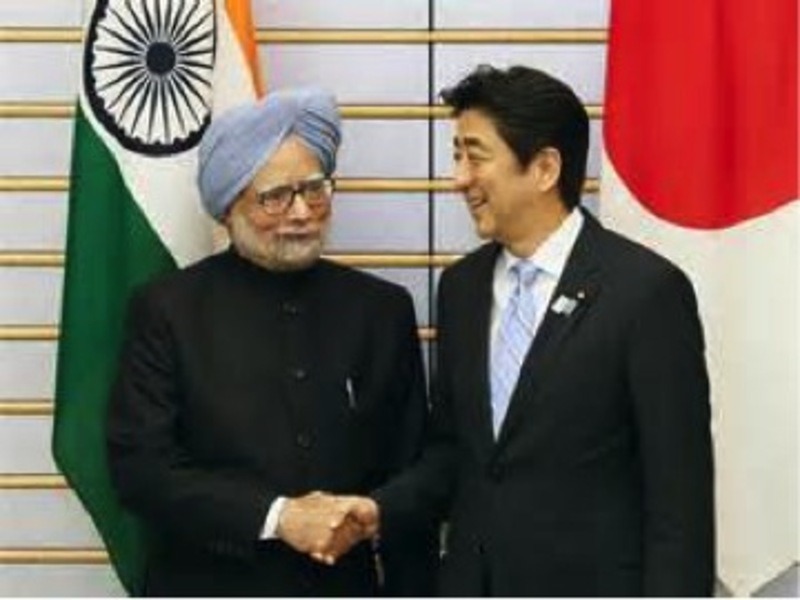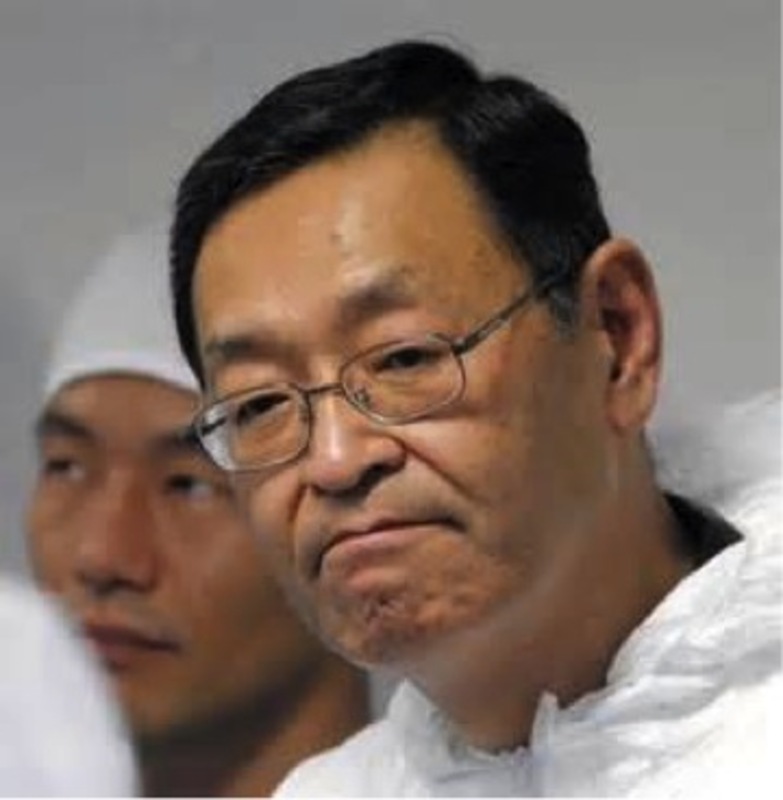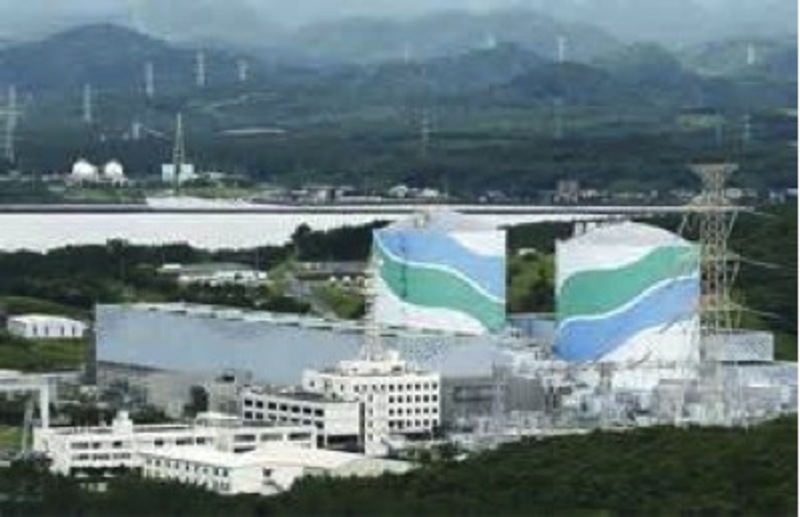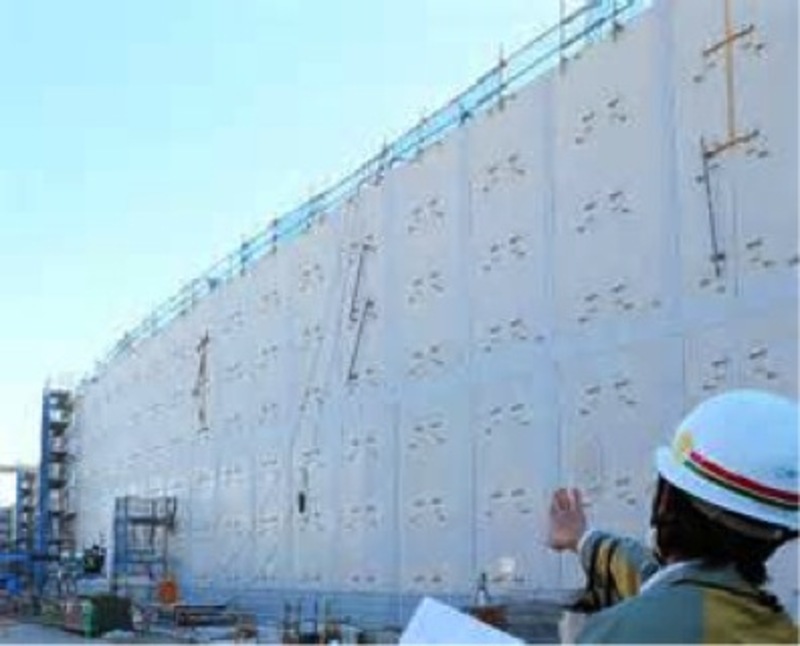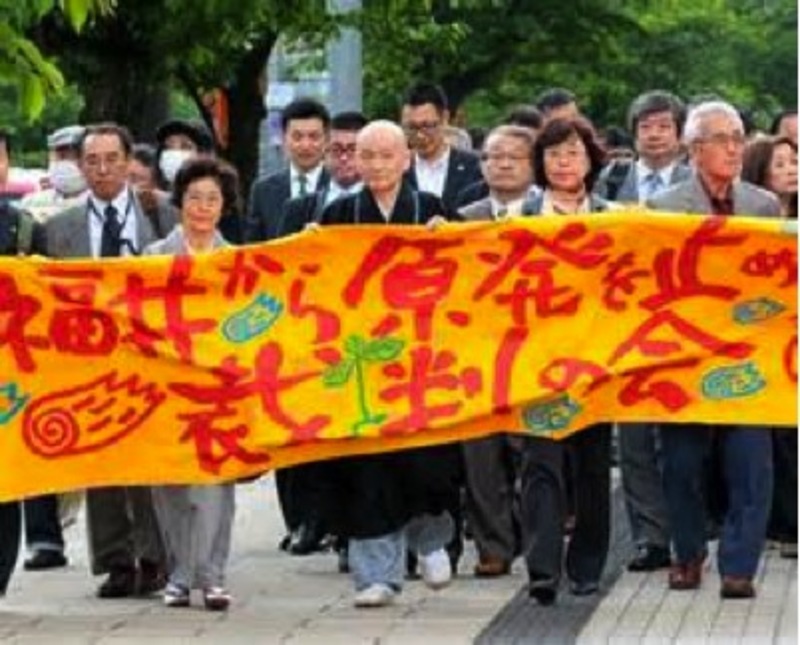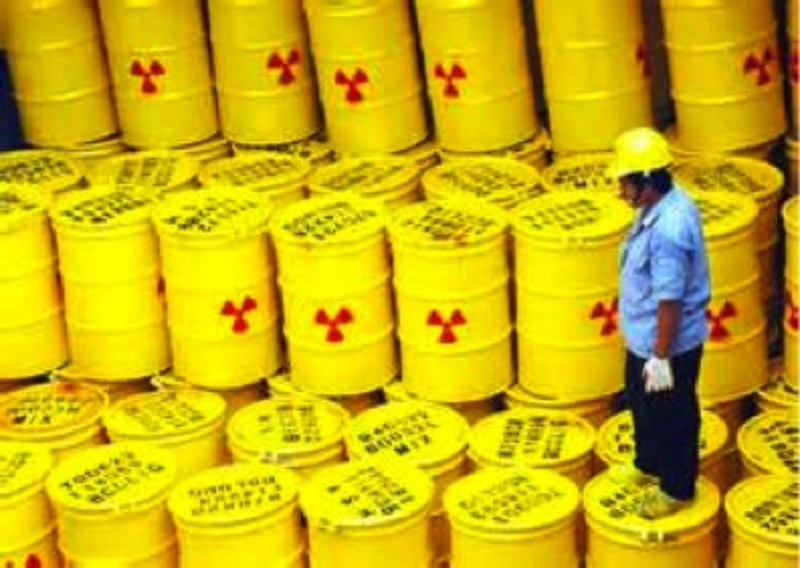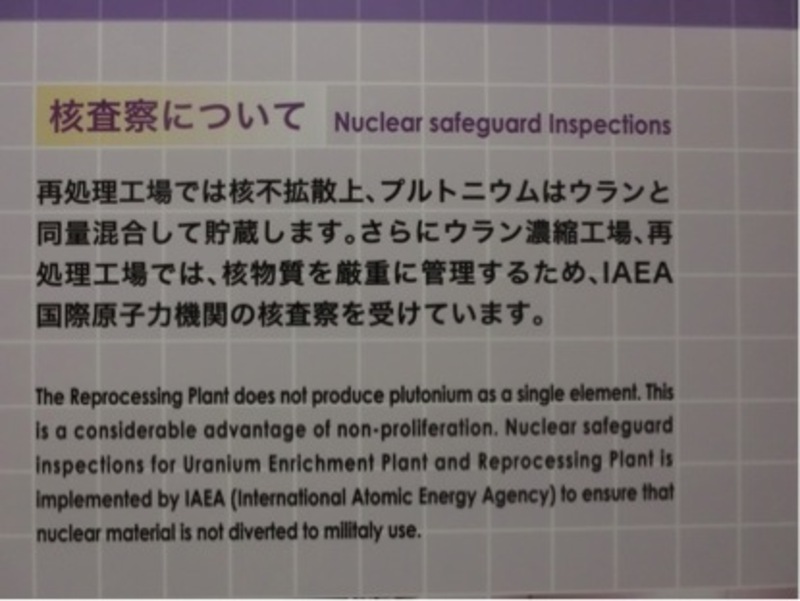In April 2014 Prime Minister Abe unveiled Japan’s new national energy strategy, reinstating nuclear energy as a key source of energy even as the shambolic cleanup and decommissioning at the Fukushima Daiichi lurches from one blunder to the next malfunction, and radiation contaminated groundwater flows into the ocean. This is a major milestone in the comeback of nuclear energy despite a seemingly endless cascade of damning revelations about lax safety practices and perfunctory oversight since the three reactor meltdowns in March 2011. As a result, 2014 may be Japan’s last nuclear free summer for the next few decades as pressure is mounting to restart some of Japan’s 48 idled reactors.
Why has Fukushima not been a game changing event? The institutions of Japan’s nuclear village (principally the utilities, big business, the bureaucracy and the Diet) enjoy considerable advantages in terms of energy policymaking. (Kingston 2012c, Kingston 2012d, Kingston 2013a, Kingston 2013b) They have enormous investments at stake and matching financial resources. Richard Samuels argues that the nuclear village is too big to fail while Jacques Hymans draws attention to the institutional advantages that favor energy policy inertia. (Samuels 2013, Hymans 2011) Abe’s nuclear renaissance is possible because the nuclear village has engaged in relatively successful damage control while also working the corridors of power and backrooms where energy policy is decided. In this arena the nuclear village with its vast financial and lobbying resources enjoys tremendous advantages that explain why it has prevailed over public opinion concerning national energy policy.
|
PM Abe Shinzo inspects stricken Fukushima plant |
National Energy Plan Faces Hurdles
In April 2014 the Abe cabinet approved Japan’s first new national energy plan since the Fukushima accident. (DeWit 2014) Unlike earlier national energy plans, the government did not explicitly adopt numerical targets for the energy mix, probably to avoid presenting a target for antinuclear activists. But it left open the door to new reactor construction and suggested that nuclear energy should remain a key base-load source of continuous energy supply. It also said it would proceed with restarts once the Nuclear Regulation Authority (NRA) verifies that reactors have met new safety criteria.
With Abe at the helm and the LDP facing no effective political opposition in the Diet, it looks like smooth sailing ahead for the nuclear village. But even as Abe’s plans for a nuclear renaissance gain momentum, obstacles remain.These include the necessity to: (1) secure NRA approval of reactor restarts; (2) gain host community agreement to restarts; (3) overcome prefectural government opposition to restarts; (4) decide on the fate of reactors that do not meet new safety criteria; (5) decide what to do with radioactive waste; (6) overcome technical problems at Rokkasho, the spent-fuel reprocessing facility, and the massive costs of pursuing the nuclear fuel cycle; (7) justify nuclear energy in light of diminished power demand and nuclear’s high costs; (8) overcome public opposition and media criticism; and (9) the unnerving spectacle, three years after Fukushima, of 130,000 nuclear refugees coping with long-term displacement and facing the end of government subsidies.
Post-Fukushima it seemed unlikely that Japan would restart nuclear reactors let alone export them, but both initiatives are central to PM Abe’s agenda. The stakes are exceptionally high given the vast amount of money invested in the 48 viable reactors and the opportunity cost of foregoing this source of energy and decommissioning the plants. The vested interests in industry, government, and finance that have the most to lose from phasing out nuclear energy remain resolute and influential. Since the furor has subsided somewhat, nuclear energy has settled back into existing policy ruts; inertia trumped transformation because it is easier to sustain what exists than to mount an energy revolution that takes on established vested interests and challenges policy rigidities. Nonetheless, Japanese doubts remain high, especially because the stricken Fukushima plant continues to spew radiation into the ocean and the media has drawn attention to lingering safety issues and the unlearned lessons of Fukushima.
|
PM Abe, here meeting with former Indian premier Manmohan Singh, is eager to restart reactors to help promote nuclear exports |
Abe’s restart agenda has become more complicated following the revelation in May 2014 that the government and Tepco had been hiding the fact that almost all workers, including managers at the Fukushima Daicihi (#1) plant, fled the scene and abandoned their posts on the morning of March 15, 2011 as the crisis seemed to be spiralling out of control. Contrary to the nuclear village’s narrative, the workers ignored orders from their superiors and were unavailable for emergency countermeasures. (Kimura 2014a) Instead of remaining on the plant site as ordered, most workers fled for their lives to the Fukushima Daini (#2) plant 10 km to the south. While such actions are understandable, they shatter the myth of workers heroically remaining at their posts throughout the crisis that Tepco and the government has cultivated and raises new questions about the lessons of Fukushima. It has also been revealed that right at the beginning of the crisis all of the government safety inspectors from the Nuclear and Industrial Safety Agency (NISA) working at the Fukushima Daiichi fled the scene, meaning they were not on site to advise on what steps should be taken to manage the accident. (Sekine 2014 b) They initially moved to a remote command center 5 km away and then on March 15th relocated to Fukushima City, 50 km away. As a result the government did not have its own experts on site to provide information and advice and was totally dependent on Tepco for information. Communications between Tepco headquarters and the prime minister’s office, however, were not smooth, generating misinformation, distrust and chaos. Under current rules radiation exposure of public servants must not exceed 100 millisieverts, although this was temporarily increased to 250 millisieverts during the nuclear crisis. No new limit has been decided so regulations require withdrawal of workers if they exceed the stipulated limit and as such they are within their rights to evacuate. However, the government manual on how to deal with a nuclear accident has been modified to require safety inspectors to stay at a stricken nuclear plant’s onsite command center to gather information. The government has not changed its policy that the nuclear plant operator is the main actor responsible for dealing with a nuclear accident. The NRA chairman Tanaka explains, “We are not assuming that an accident the operator cannot control will take place.” (Sekine 2014b)
Given the exodus of plant workers, is that a justified assumption? Is it possible to operate nuclear reactors safely if those responsible for conducting emergency operations cannot be relied on to carry out their duties? Moreover, Yoshida Masao, the veteran plant manager responsible for emergency countermeasures, admitted he had no idea how to operate the emergency cooling system and thus made a crucial error in managing the crisis. (Asahi 5/23/2014)
|
Yoshida Masao, the Fukushima Daiichi plant manager who died of cancer in July 2013, gave alarming testimony to government investigators about the crisis that was kept secret until revealed by the Asahi in May 2014 |
These reports about fleeing workers and inspectors, and the plant manager’s lapses, were all news to the chairman of the new nuclear safety watchdog agency – the Nuclear Regulatory Authority (NRA) – charged with preventing a recurrence of a nuclear disaster and reinforcing doubts about whether ongoing safety checks focusing on hardware upgrades are sufficient to ensure reactor safety given that human error and inadequate training were key factors in the nuclear accident.
Following these revelations, the Asahi also interviewed Hosono Goshi, special advisor to PM Kan Naoto during the crisis. (Asahi 6/1/2014) Hosono recalls conversations with the plant manager, Yoshida Masao, who died last year of esophogeal cancer, and revisits the controversies over pumping seawater into the reactors as well as Tepco headquarter’s plans to withdraw all workers during the height of the crisis. Kan’s critics have tried to blame him for the suspension of seawater pumping and assert that Tepco president Shimizu Masataka never called for a total evacuation. But according to Hosono, these accusations conflict with Yoshida’s recollections. Hosono clarifies that Yoshida told him he opposed headquarters support for a total withdrawal and that Shimizu favored such an evacuation. Hosono recalled, “The idea of withdrawing the workers (from the plant) was expressed by officials at the company (headquarters), including President Shimizu. I felt that their stance differed from that of Yoshida.”
Hosono explained, “(My impression was) Yoshida had decided in his mind to stay in the plant. The prime minister’s office also decided to support him completely. The problem was whether TEPCO (headquarters) had the resolve to support him and other workers in the plant. TEPCO employees stationed in the prime minister’s office appeared to be operating in a mind-set that there were no more ways remaining to deal with the accident.” Hosono stated that very early in the morning of March 15th TEPCO officials informed the prime minister’s office that the situation at Fukushima Daicihi was “out of control” and that they had run out of options in trying to contain the disaster. “With TEPCO saying there was nothing they could do, we were consumed by hopelessness,” said Hosono. (Kimura 2014 b) Encouraged by Yoshida’s reassuring words, “I will do my best and stand firm”, later that day PM Kan told TEPCO President Shimizu Masataka that he would not allow the utility to pull out all of its workers, trusting the plant manager to do what headquarters said it couldn’t.
Yoshida also said that he ignored headquarters orders to suspend pumping of seawater into reactor 1, but briefly acceded to their wishes not to pump seawater into reactor 3. In hindsight, he believed this failure to flood seawater into reactor 3 was a critical mistake.
The significance of these revelations far transcends the politics of pinning as much blame as possible on Kan. Rather, they are timely reminders about the role of human error and misjudgment in the Fukushima debacle. Moreover, these reminders are going unheeded, another example of risk mismanaged. (Perrow 2011)
Culture of Safety
Can the NRA nurture a culture of safety and crack the whip on the powerful utilities? In September 2012, the discredited Nuclear and Industrial Safety Agency (NISA) and the Nuclear Safety Commission (NSC) were disbanded and replaced by the Nuclear Regulation Authority (NRA). Unlike NISA, the NRA is not under METI’s authority. The conflict of interest between METI, the government institution promoting nuclear energy, and NISA, the body responsible for ensuring safety, undermined safety and helps explain the inadequate culture of safety that led to the Fukushima accident. (Asahi 2/14/2014) Even so, the NRA is more a reorganization than a significant reform as almost all of its’ staff was transferred from NISA and the NSC. Thus the same regulators who were regulating in favor of the nuclear village remain in charge.
The new nuclear safety czar, Tanaka Shunichi, is credited with compiling new safety guidelines that came into effect in July 2013 that target lax safety standards, poor industry oversight, and widespread concerns about operating nuclear plants in quake-prone Japan. Yet whether these guidelines prove effective in upgrading safety at Japan’s nuclear power plants depends on compliance. A further problem is that the new safety upgrades – including remote command centers, backup power supplies, higher seawalls, and venting filters – focus on hardware. As we discussed above, however, the still-emerging lessons of Fukushima suggest it is imperative to upgrade basic worker training and crisis management skills while nurturing a culture of safety. Considering the enormous cost of accidents and the role of human error in producing and exacerbating them, there can be no quick fixes.
Tanaka emphasizes that the NRA’s top priority is the safety of reactors, not the operator’s bottom line. One would certainly hope so. But Tanaka’s assertion is belied by the NRA’s allowing Tepco to cut corners on the Fukushima clean-up work that compromised safety and led to extensive radioactive contamination of groundwater now seeping into the ocean. (Oshika 2013; Asahi 1/4/2014; Hatano 2014a; Hatano 2014b. Asahi 5/24/2014; Nikkei Asian Review 4/12/2014) Reports of problems with malfunctioning decontamination equipment, shoddy storage tanks for contaminated water that leak, and worker error are emblematic of the endless bungling. Are other cash-strapped utilities also shortchanging safety? The NRA’s human resources appear inadequate to closely monitor the clean-up operations, raising questions about whether it has the capacity to oversee strict enforcement of new safety guidelines and institutionalize a culture of safety.
Although Abe’s plans for a nuclear revival face hurdles, NRA approval of some restarts seems very likely by the end of 2014. In recent weeks, Abe has boosted the prospects for this outcome by moving to replace outgoing NRA commissioners with candidates who have a pronuclear track record. This political meddling in the safety review process will undermine its already limited credibility, but will facilitate reaching the foreordained conclusion in favor of restarts. However, giving the go-ahead for restarts requires ignoring significant risks.
|
The NRA is fast-tracking safety approval for the Sendai plant in Kyushu despite being only 50 km distant from an active volcano |
Evacuation zones have been expanded from 10 kilometers (km) to a 30 km radius around nuclear plants, including millions more residents in their ambit and exponentially increasing logistical difficulties. At the same time, local authorities and utilities remain woefully unprepared for an emergency, just as they were in March 2011. Indeed, Chubu Electric simulated an evacuation of the 860,000 residents living within 30 km of the Hamaoka Plant that reveals how difficult this would be in an actual emergency. The urgency of quick flight from potential radioactive plumes runs into the reality of infrastructure constraints: snarled traffic means that those fleeing an accident would be slowed to a crawl requiring thirty-two to forty-six hours, and hence be subject to significant radiation exposure. (Asahi 4/24/2014) Just evacuating the 50,000 residents who live within 5 km of the Hamaoka plant outside the 30 km zone would require more than twenty-four hours.
Problematically, the above simulations disregard such factors as seismic damage to roads or the complications of evacuating hospital patients and the elderly. The Hamaoka Plant is located only 190 km from Tokyo near the Nankai Trough where two tectonic plates meet, an area considered to be at very high risk of a major earthquake and tsunami. In May 2011 PM Kan ordered Chubu Electric to close down the plant due to safety concerns and the utility has subsequently built a 22-meter-high breakwater (pictured below) for over $1 billion in order to gain permission to resume operations.
The evacuation preparedness problem won’t go away and an improvised exodus means mayhem. It is therefore alarming that none of the clusters of towns in any of the designated evacuation zones around the nation’s nuclear plants has conducted a live evacuation drill. A March 2014 survey of the mayors of 134 towns and villages located near reactors found that evacuation plans exist in only six of the sixteen nuclear plant 30 km evacuation zones. (Saito 2014) Are these existing evacuation plans plausible in a crisis or just paper exercises enabling hosting communities to check off the requisite box?
One key lesson of Fukushima is that you don’t want to be practicing an evacuation for the first time when the reactors are discharging radiation. Chaos reigned in March 2011 as authorities scrambled to cope with logistical problems of cobbling together an evacuation during a cascading disaster. The blizzard of imperatives included immediately arranging buses, preparing shelters with adequate food, water, and blankets, and dealing with the special needs of the elderly and hospitalized
This unpracticed haste led to failures. Among the snafus, the SPEEDI data of computer simulations of radiation dispersal were not used. Consequently, the authorities relocated some evacuees from relatively safe areas to hot zones with higher levels of radioactive contamination. This mistake was not rectified for a month, needlessly exposing many evacuees to higher radiation doses than if they had remained in their homes. Promoting more effective disaster management will require more extensive coordination between local and national authorities, capacity building at local levels especially in logistics, and developing and testing protocols for timely sharing of information and issuing alerts. If the NRA is indeed serious about safety, surely it must mandate adequate levels of evacuation preparedness before authorizing any restarts. This does not appear to be on the NRA’s agenda, but as we discuss below, there are 130,000 reasons why it should be.
Reactor Restarts and Safety Skeptics
As of June 2014, the NRA is reviewing applications to restart nineteen nuclear reactors around the nation. The safety screenings involve confirming that the reactors meet new stricter safety standards. The government has touted the standards as the strictest in the world, but this claim is disputed, and even NRA Commissioner Fuketa Toyoshi begs to differ. (2014a) Niigata Governor Izumida Hirohiko accuses the government of lying about the new guidelines and points out that even if the reactors meet the new safety guidelines this doesn’t mean they are safe to operate in the absence of evacuation plans and preparations. (Asahi 4/23/2014; Asahi 4/24/2014) He asserts that local authorities are not able to cope with cascading simultaneous disasters as occurred in 2011, and that there is an urgent need to improve disaster management, something that the new safety guidelines don’t address. In his view, its not just a matter of having the right equipment, but knowing how to respond to the unexpected while juggling various urgent problems. This requires extensive training and coordination, which has not been undertaken. The governor also raises the issue of crisis management in which the utilities have authority to decide whether or not to use seawater in an emergency to cool reactors and prevent a possible meltdown. Doing so ruins the reactors so the utilities have a financial interest in delaying such an action at the expense of public safety.
Izumida has also raised numerous questions about emergency measures in the midst of a nuclear accident. For example, he cites laws related to radiation exposure and how they would apply to drivers of evacuation buses and plant workers trying to contain the crisis. No doubt the governor is also aware of Whiteout, the 2013 bestseller by an anonymous Japanese nuclear industry insider. The book describes a hypothetical terrorist attack on the Niigata nuclear facility. Its scenario sketches how the deep snows for which the area is famed hamper emergency operations. The outcome is a massive nuclear disaster at the world’s largest nuclear power plant.
Safety concerns exlain why most Japanese want to pull the plug on nuclear energy. An Asahi poll conducted in March 2014 finds that 77 percent of respondents favor phasing out nuclear energy, while only 14 percent oppose such a policy. (Asahi 3/18/2014) Restarts of nuclear reactors are opposed by 59 percent while 28 percent support such a policy, similar to results in 2013. There is a significant gender gap in support of nuclear energy as 39 percent of men support restarts while only 18 percent of women do.
A majority of Japan’s nuclear reactors, thirty out of forty-eight, are unlikely to ever be restarted because they will not comply with the new safety criteria. (Asahi 3/12/2014) At least a dozen older reactors face decommissioning as the law specifies that reactors should be shut down after forty years; by the end of 2014 five will be past their shelf life with an additional seven within five years. The cost of upgrading such early generation reactors is prohibitively high and the prospects of recovering outlays on safety upgrades remote.
A Reuters survey in March 2014 suggests that probably only one-third of Japan’s reactors will meet the new safety criteria and be restarted.(Saito 2014) Before 3.11 Japan had fifty-four reactors in operation supplying nearly 30 percent of the nation’s electricity. The Reuters findings suggest that fourteen reactors will be restarted, seventeen face an uncertain fate, and seventeen will never be restarted. Assuming only one-third are restarted, nuclear energy would equal less than 10 percent of electricity supply, meaning that it really can’t serve as a “base-load” energy option. Nuclear advocates have long maintained that nuclear power is necessary in order to provide a stable continuous minimum “baseload” supply of electricity to the grid, but the scenario suggested by Reuters indicates that the numbers no longer add up.
|
Plaintiffs won a lawsuit to block restarts of Kepco’s Oi nuclear reactors |
The findings of a Kyodo survey conducted in February 2014 reveal a stunning level of reluctance to restart Japan’s nuclear reactors in the host cities, towns, and prefectures that stand to gain financially from revving them back up. (Japan Times 3/2/2014) The nation’s four dozen reactors are generating no electricity at present—and no local subsidies are paid as long as they are idled. However, the spigot of financial inducements would open up again if the local governments in question were to green-light reactor restarts. Despite this lure, only 13 out of the 135 villages, towns, cities, and 21 prefectures situated within 30 km of a nuclear power plant responded positively to the survey affirming they would unconditionally approve restarting local reactors if the NRA vouched for their safety; another 24 would do so only if certain other conditions were met. It is a stunning rebuke that less than 10 percent of those authorities are keen to sign up for Prime Minister Abe’s nuclear renaissance despite all the foregone benefits and that so few trust in the NRA’s safety assessments. It’s not what one would expect given the high subsidy-addiction that afflicts these hosting communities, many of them poor and facing population depletion and severe aging. (Sentaku 2013; Onitsuka 2012) These towns were specifically selected because they were dying, remote communities with no other options—and many of them grabbed the nuclear lifeline with gusto. (Aldrich 2008) Now, even these desperate towns that are so dependent on the nuclear industry for their operating budgets have got cold feet about nuclear energy and are reconsidering their Faustian bargain. It is also problematic that only hosting towns receive the subsidies even though the surrounding towns within the 30 km evacuation zone shoulder the same risks.
What’s the matter with these usually reliable supporters of nuclear energy? Apparently, they now realize that they have been misled by the utilities and the government about reactor safety—and they understand just how unprepared everyone was when catastrophe struck on 11 March 2011. Moreover, they have no confidence that those in charge now are any better prepared for the next nuclear disaster. Hosting communities understand that the citizens of Fukushima Prefecture have been left high and dry by the government and Tepco. On 27 February 2014, national broadcaster NHK’s “Close-Up Gendai” TV program focused on the plight of some 130,000 “nuclear refugees” still languishing in temporary housing three years on, still waiting for answers and compassion. The refugees remain baffled and disheartened by incomprehensible loss amplified by institutional betrayal. Many of these residents have received only pittances of compensation for homes they can’t live in and businesses they cannot operate, and have effectively been abandoned to their fates. They face loss of their temporary housing subsidies as the government rushes to lift evacuation orders in villages authorities have now deemed safe but to which former residents remain leery of returning. Japan’s Chernobyl remains a humanitarian crisis of epic proportions that has turned lives upside down, divided families, and destroyed communities that had the misfortune of being located near the Fukushima No. 1 nuclear power plant. Evacuees have had to abandon ancestral homes, and for many the prospects of returning remain slim as decontamination and decommissioning of the plant is slated to take four decades. Already livelihoods have been lost and there is an ongoing exodus of young people who see no future in Fukushima.
Legal Challenges
|
Rokkasho Visitor’s center |
Are the potential dangers of hosting a reactor an acceptable risk given the alternative of economic decline and depopulation? Many communities in remote coastal areas where Japan’s fleet of reactors are sited are grappling with this calculus. Until now the fishing port of Oma has been known for its world famous blue-fin tuna catches, but that is changing due to the town’s decision to host a nuclear power plant. In 2014, the city of Hakodate in Hokkaido, located just across the Tsugaru Strait from Oma (located on Japan’s main island of Honshu), filed a lawsuit against the central government and the utility to block ongoing construction of the Oma mixed-oxide fuel (MOX) reactor. (Asahi 4/11/2014) This is the first lawsuit of its kind in Japan in which a town is the plaintiff suing for an injunction to stop construction of a nuclear reactor. The two towns are separated by twenty-three km of water, meaning that Hakodate, population 275,000, falls within the newly extended thirty-km evacuation zone. The city will get none of the economic benefits, but faces all of the potential risks. The mayor of Hakodate complains that he is being asked to prepare an evacuation plan without adequate information and asserts that the lessons of Fukushima are being ignored as government support for nuclear energy does not include adequate provisions for ensuring safety, outsourcing it to local communities that lack the resources and capacity to do so. He echoes the concerns of Niigata Governor Iizumida, complaining that the NRA’s emphasis on upgrading hardware is inadequate to ensure operational safety and ignores emergency procedures. He said, “I wonder if that would lead to ‘the second safety myth’ in which people believe safety is assured as long as the measures against earthquake and tsunami will be reinforced.” (Asahi 4/11/2014) The Fukushima accident exposed the 100 percent reactor safety myth based on failsafe technology that was invoked to facilitate nuclear expansion since the 1960s. It remains to be seen if the Hakodate lawsuit will have a ripple effect in towns that are in the same vulnerable situation, but the possibility of legal entanglements casts a shadow over Abe’s nuclear renaissance as local governments and citizens groups mount legal challenges that could delay restarts and new plant construction.
Indeed, in May 2014 the Fukui district court ruled against the Kansai Electric Power Company (Kepco) in a lawsuit filed by citizens opposing the restart of the utlitity’s Oi reactors. (Asahi 5/22/2014) The judge rejected Kepco’s claims that the reactors could be operated safely and asserted that the intrinsic dangers of nuclear reactors combined with the unpredicitability of earthquakes endanger the fundamental constitutional rights of citizens. The judge stated, “People’s right to life is the very foundation of personal rights, which are protected by the Constitution. It must be regarded with the highest respect in the field of law.” He added, “While Kansai Electric says the operation of the plant will secure a stable supply of electricity, comparing the fundamental rights of so many people to survive and the utility prices on equal grounds is not a legitimate argument for this legal authority to consider”. Significantly, the court ruling broadens the designation of who is at risk in a nuclear accident, stating that anyone living within 250 km of a reactor faces concrete dangers. In ruling that the new safety guidelines cannot ensure safe operation of reactors, and placing resident’s safety above economic logic, the judge established a precedent that could have a significant impact on sixteen other similar cases in the pipeline. (Johnston 2014)
KEPCO has appealed the district court ruling and Abe’s spokesman asserted that it would have no influence over the NRA’s ongoing safety evaluations and reactor restarts. (Asahi 5/22/2014) His hubris is justified by the fact that, as in nuclear energy lawsuits, the very few decisions against nuclear power plants over the past few decades have been overturned on appeal. Moreover, KEPCO can restart the reactors with the NRA’s and hosting community’s approval and operate them until the appeal process is finalized, albeit at the risk of a public backlash.
Nuclear Fuel Cycle
Two decades and $21 billion later, Japan’s nuclear reprocessing and waste storage facility at Rokkasho, just down the coast from Oma, is not yet operating. There have been numerous delays and large cost overruns, but the operator, Japan Nuclear Fuel, Ltd., is hopeful because Abe has revived prospects for restarting nuclear reactors. The company wants to get the facility running as soon as possible, but the NRA has issued stricter safety standards as of December 2013 for facilities like Rokkasho dealing with nuclear fuel and is expected to conduct an in-depth geological survey of the site to determine if some experts are right in believing that it is located on top of an active fault-line. Under the circumstances the timing of Rokkasho’s commissioning remains uncertain. The purpose of Rokkasho is to achieve the holy grail of the closed fuel cycle: “From the inception of its civilian nuclear program, Japan has been strongly committed to developing a self-sufficient closed nuclear fuel cycle, in which spent fuel from light-water reactors is reprocessed to yield plutonium that could be used in making new fuel.” (Toki and Pomper 2014)
Critics point out that Rokkasho’s capacity is inadequate to cope with the waste generated by Japan’s reactors; its pools for temporary storage of spent fuel are already 95 percent full. Delays are partially due to problems with Rokkasho’s kiln that is supposed to turn un-recyclable nuclear waste into glass for onsite underground storage. But if Japan restarts its reactors and gets the kiln to work, Rokkasho’s “temporary” waste storage capacity will be maxed out in two decades. Given NIMBY politics and seismic vulnerabilities, there is no apparent permanent burial site anywhere in Japan. Just north of Rokkasho in the town of Mutsu, plans are to build a dry-cask nuclear waste storage facility (common in the United States, France, and Germany) for Tepco, but this also would have insufficient capacity.
|
Running out of room |
Recycling spent fuel also comes with a staggering price tag; a projected $245 billion over forty years.(IPFM 2013) Just burying it would be much cheaper, but then the government would have to coax a desperate town in a lightly populated area with a stable geology to become the nation’s designated “nuclear cesspool” for the next few centuries. Is there such a place in Japan? Aomori Prefecture has already said no thanks. With the Rokkasho and Mutsu facilities, a nuclear plant close by at Higashidori and another under construction at Oma, this scenic backwater already is a major nuclear hub.
Reducing Japan’s large stockpile of plutonium depends on switching to mixed oxide fuel (MOX), but this is a tough sell as MOX is four to six-and-a-half times more expensive than regular uranium fuel. Hosting communities are also leery as it is regarded as more dangerous. Of the reactors under review by the NRA for restarts, three utilities (Shikoku, Kyushu, and Kansai) have plans to use MOX in a total of four reactors. In April 2014, however, the governor of Shizuoka, Kawakatsu Heita, rescinded approval to use MOX fuel at the Hamaokoa facility and pledged to hold a plebiscite to give local residents a say in whether the reactor should be restarted. He also said that spent fuel should be stored in dry casks on the plant site rather than reprocessed. To the extent that other local politicians follow his lead, the national energy plan, and Abe’s nuclear rennaissance, faces trouble.
In 1988 the United States granted Japan permission to reprocess plutonium from U.S.‒originated spent fuel on the understanding that this would be used for energy generation. (Okuyama 2014) Japan is the only nation without nuclear weapons that is allowed under international law to enrich uranium and extract plutonium with minimal scrutiny. Although the International Atomic Energy Agency (IAEA) conducts inspections to ensure that none of this material is being diverted, this doesn’t necessarily convince Japan’s neighbors, or apparently even Washington. Washington has pressured Japan to restart reactors because of concerns about the purpose of Japan’s large stockpiles of plutonium if they are not operating. Japan has 44 tons of separated plutonium, enough for numerous atomic bombs, and an overall stockpile of some 150 tons of plutonium. This undermines Washington’s already dubious stance on nonproliferation if Japan is not using the processed fuel in reactors and doesn’t plan to do so. But some Japanese favor retaining ‘strategic flexibility”, that is the nuclear weapons option. (Taki 2014) As LDP secretary general Ishiba Shigeru argues, “Having nuclear plants shows to other nations that Japan can make nuclear weapons.” (Kageyama 2012) That is precisely what Washington doesn’t want to worry about.
The Wall Street Journal reported that, “Tatsujiro Suzuki, vice chairman of the Japan Atomic Energy Commission, met in April in Washington with Obama administration officials, and paraphrased what he said was their message: ‘“Allowing Japan to acquire large amounts of plutonium without clear prospects for a plutonium-use plan is a bad example for the rest of the world’.” (Solomon and Inada 2013 2013; Okuyama 2014) The Obama administration’s real concern is that Japan’s strategic ambiguity might destabilize the region. In 2014, under considerable pressure, Japan agreed to return 315 kg of weapons-grade plutonium, enough to produce forty to fifty nuclear weapons, amidst media reports that security for Japan’s plutonium stockpiles is minimal. (Japan Times 3/24/2014) This amount, however, is only a fraction of Japan’s overall stockpile of forty-four tons.
|
Rokkasho Visitor’s center offers reassurances on proliferation |
A report issued in 2013 by the International Panel on Fissile Materials (IPFM), compiled by independent nuclear experts, gives a failing grade to Japan’s nuclear fuel recycling policy and urges reconsideration because Japan is undermining the non-proliferation regime. (IPFM 2013) The IPFM recommends, inter alia, a government takeover of spent fuel management, air-cooled dry cask storage of spent fuel at nuclear power plants, continuation of subsidies to offset axing the reprocessing project and deep burial of Japan’s forty-four tons of separated plutonium. The IPFM notes, “Japan finds itself trapped politically in a spent fuel reprocessing policy that has insignificant resource conservation and radioactive waste management benefits and is becoming increasingly dysfunctional, dangerous and costly.” (IPFM 2013, 6)
So Japan remains far from closing the nuclear fuel cycle and in the meantime is accumulating a stockpile of weapons-usable plutonium that raises proliferation risks, puts Japan at odds with its neighbors, and could be targeted by terrorists as it is lightly guarded. (Tabuchi 2014) The pursuit of the nuclear fuel cycle has proven expensive and elusive for the past four decades and makes little sense in terms of economic viability or probability of success, but here again institutional inertia has triumphed over good sense. (Taki 2014) The vested interests that have grown up around the nuclear fuel cycle have been able to veto its termination and mobilize strong political backing for this zombie enterprise. As a showpiece of Abenomics it is a sobering example that, for all the hoopla about reform, the profligate ways and means of the LDP have merely been rebranded and rebooted and the lessons of Fukiushima are being ignored.
Nuclear Renaissance
Prime Minister Abe Shinzo’s nuclear renaissance involves downplaying risks, restarting reactors, building new ones, and exporting reactor technology and equipment. Polls in Japan indicate that the public remains overwhelmingly opposed to Abe’s nuclear agenda, but in various national and local elections since late 2012 antinuclear candidates have not fared well. The implosion of the DPJ left an open political field for the LDP, so even if voters don’t support its nuclear energy policy, they have given it power to promote its agenda.
The safety myth is being recalibrated, but remains based on rosy assumptions in a nation especially prone to massive seismic disasters. The reinstatement of nuclear energy in the 2014 national energy policy marks a victory for the nuclear village, a remarkable example of institutional resilience in the face of extremely adverse developments since the massive earthquake and tsunami of 11 March 2011. Despite extensive revelations about slipshod safety practices in the nuclear industry and collusive relations between regulators and those they regulate (Diet 2012, Cabinet 2012, RJIF 2014, Lochbaum 2014), Abe has successfully promoted a nuclear revival that few would have thought possible before his election in 2012. Reactor restarts face a number of hurdles, but the pronuclear lobby now finds it has a policy opening. The summer of 2014 will be nuclear-free, but in all likelihood it will be Japan’s last for decades to come.
Recommended Citation: Jeff Kingston, “After 3.11: Imposing Nuclear Energy on a Skeptical Japanese Public,” The Asia-Pacific Journal, Vol. 11, Issue 23, No. 4, June 9, 2014.
Jeff Kingston is the Director of Asian Studies, Temple University Japan. He is the editor of Natural Disaster and Nuclear Crisis in Japan: Response and Recovery after Japan’s 3/11, Routledge 2012 and the author of Contemporary Japan. (2ndedition), London: Wiley 2013. The author is grateful for the input and suggestions by Andrew DeWit and Mark Selden.
Related articles
• Kyle Cleveland, Mobilizing Nuclear Bias: The Fukushima Nuclear Crisis and the Politics of Uncertainty
• Takahashi Tetsuya, Shineha Ryuma and Tanaka Mikihito, Mind the Gap: 3.11 and the Information Vulnerable
• Adam Broinowski,. Fukushima: Life and the Transnationality of Radioactive Contamination
• Yasuhito ABE, Safecast or the Production of Collective Intelligence on Radiation Risks after 3.11
• Shineha Ryuma and Tanaka Mikihito, Mind the Gap: 3.11 and the Information Vulnerable
• Yasuhito ABE, Safecast or the Production of Collective Intelligence on Radiation Risks after 3.11
References
Aldrich, Daniel. 2008. Site Fights: Divisive Facilities and Civil Society in Japan and the West, Ithaca, NY: Cornell University Press.
Cabinet. 2012. Investigation Committee on the Accident at Fukushima Nuclear Power Stations of Tokyo Electric Power Company, Final Report, (July 23). The official website is no longer available. A brief summary with links to numerous articles about the findings is available here, (Last accessed 24 May 2014).
DeWit, Andrew (2014) “Japan’s Energy Policy Impasse,” The Asia-Pacific Journal, Vol. 12, Issue 14, No. 1, (7 April) .
Diet. 2012. National Diet of Japan, The Official Report of the Fukushima Nuclear Accident Independent Investigation Commission, Executive Summary (July).. (85 pages). (Last accessed 24 May 2014).
Economist. 2012. “The Dream that Failed, Special Report: Nuclear Energy” (8 March). (Last accessed 24 May 2014).
Hymans, Jacques. 2011. “Veto Players, Nuclear Energy, and Nonproliferation” International Security, Vol. 36, No. 2: 154–189 (Fall).
IPFM. 2013. Masafumi Takubo and Frank von Hippel, “Ending reprocessing in Japan: An alternative approach to managing Japan’s spent nuclear fuel and separated plutonium,” (November). Last accessed May 1, 2014.
Hatano, Akira. 2014a “Work on frozen soil walls at Fukushima plant hits glitch”, Asahi (17 May). (Last accessed 24 May 2014).
Hatano, Akira. 2014b. “Glitch-prone ALPS water treatment equipment shut down at Fukushima plant” Asahi (21 May). (Last accessed 24 May 2014).
Japan Times. 2014. “Japan to return weapons-grade plutonium to U.S.”, Japan Times (24 March). (Last accessed 24 May 2014).
Japan Times 2012. (Editorial) “Detecting Active Faults Near Reactors”, Japan Times (14 December) (Last accessed 24 May 2014).
Japan Times. 2013. “Editorial: The MOX Fuel Conundrum” (26 July) (Last accessed 24 May 2014).
Johnston, Eric. 2014. “Oi Ruling may fuel anti-nuclear push”, Japan Times, 5/22/2014. (Last accessed 6/1/2014).
Kageyama, Yuri. 2012. “Japan’s pro-bomb voices rise as nuke power debated” Associated Press, (31 July).
Kimura, Hideaki. 2014a. “90% of TEPCO workers defied orders, fled Fukushima plant in 2011” Asahi, (20 May). (Last accessed 25 May 2014).
Kimura, Hideaki. 2014b. “Hopelessness reigned after TEPCO said Fukushima crisi was ‘out of control’” Asahi. 2 June. (Last accessed 7 June 2014).
Kingston, Jeff. 2012a . “The Politics of Disaster, Nuclear Crisis and Recovery,” in Jeff Kingston (ed.), Natural Disaster and Nuclear Crisis in Japan: Response and Recovery after Japan’s 3/11. Abingdon, UK: Routledge. 188 -206.
Kingston, Jeff. 2012b. “Mismanaging Risk and the Fukushima Nuclear Crisis”, The Asia-Pacific Journal, 10: 12, 4 (19 March).
Kingston, Jeff. 2012c. “Japan’s Nuclear Village”, The Asia-Pacific Journal 10: 37 1 (10 September).
Jeff Kingston. 2012d. ‘Power Politics: Japan’s Resilient Nuclear Village,’ The Asia-Pacific Journal, 10: 43, 1, (29 October).
Kingston, Jeff. 2013a. “Japan’s Nuclear Village: Power and Resilience” in Jeff Kingston, ed., Critical Issues in Contemporary Japan. Abingdon, UK: Routledge. 107-119.
Kingston, Jeff. 2013b.”Abe’s Nuclear Energy Policy and Japan’s Future,” The Asia-Pacific Journal, Vol. 11, Issue 34, No. 1, August 19.
Kyodo. 2014. “Only 20% of municipalities will OK reactor restarts: poll” Japan Times. (2 March). (Last accessed 24 May 2014).
Lochbaum, David, Edwin Lyman and Susan Stranahan. 2014. Fukushima: The Story of a Nuclear Disaster. New York: The New Press.
Nikkei. 2014. “Tepco pressed on radioactive water cleanup at Fukushima”, Nikkei Asian Review, (12 April) (Last accessed 24 May 2014).
Nikkei 2014. “Japanese companies seeking nuclear business abroad”. Nikkei Asian Review. (19 April) (Last accessed 24 May 2014).
Okuyama, Toshihiro. 2014. “U.S. alarmed about plutonium stockpile growing from Rokkasho plant.” Asahi (13 April).
Onitsuka, Hiroshi. 2012. ‘Hooked on Nuclear Power: Japanese State-Local Relations and the Vicious Cycle of Nuclear Dependence,’ The Asia-Pacific Journal 10: 3, 1 (16 January).
Oshika, Yasuaki. 2013. “INSIGHT: ‘Troika of irresponsibility’ behind Fukushima water crisis” Asahi (25 November) (Last accessed 24 May 2014).
Perrow, Charles. 2011. “ Fukushima and the Inevitability of Accidents.” Bulletin of the Atomic Scientists 67( 6 ) 44-52.
Ramseyer, J. Mark.2012. “Why Power Companies Build Nuclear Reactors on Fault Lines : The Case of Japan.” Theoretical Inquiries in Law. 13(2): 457-485 (Jan.).
RJIF. 2014. Independent Investigation Commission on the Fukushima Nuclear Accident, The Fukushima Daiichi Nuclear Power Station Disaster: Investigating the Myth and Reality. (Expanded and updated English edition of the Report by The Independent Investigation Commission on the Fukushima Nuclear Accident, Rebuild Japan Initiative Foundation originally published in Japanese on 1 March 2012) London: Routledge.
Saito, Mari, Aaron Sheldrick and Kentaro Hamada. 2014. “Only a third of nuclear reactors may be restarted” Reuters, (2 April). (Last accessed 24 May 2014).
Samuels, Richard.2013. 3.11: Disaster and Change in Japan. Ithaca, NY: Cornell University Press.
Sekine, Shinichi. 2014a. “Doubts raised over ‘world’s strictest’ claim for new nuclear safety standards”, Asahi (26 April). (Last accessed 24 May 2014).
Sekine, Shinichi. 2014b. ”Nuclear safety inspectors first to flee stricken Fukushima plant”, Asahi. 3 June. (Last accessed 7 June 2014)
Sentaku. 2013. “Municipal nuclear addiction” Sentaku Magazine. November. (As translated in the Japan Times, 26 November) (Last accessed 24 May 2014)
Soble, Jonathan. 2012. “Doubts cast over Japan nuclear phase-out”, Financial Times. (23 October). (Last accessed 24 May 2014)
Solomon, Jay and Miho Inada. 2013. “Japan’s Nuclear Plan Unsettles U.S.” Wall Street Journal (1 May). (Last accessed 24 May 2014)
Tabuchi, Hiroko. 2012a. “Japan sets policy to phase out nuclear power plants by 2040.” New York Times . 14 September. (Last accessed 24 May 2014).
———. 2012b. “Japan, under pressure, backs off goal to phase out nuclear power by 2040.” New York Times, 19 September. (Accessed 24 May 2014).
____. 2013. “Japanese Reactor Is Said to Stand on a Fault Line”, NY Times. (15 May). (Last accessed 24 May 2014).
____. 2014. “Japan Pushes Plan to Stockpile Plutonium, Despite Proliferation Risks”, NY Times (9 April). (Last accessed 24 May 2014).
Taki, Junichi. 2014. “Japan’s nuclear problems hide behind ‘bureaucratese‘” Nikkei Asian Review, (1 May). (Last accessed 24 May 2014).
Takubo, Masa. 2011. “Nuclear or Not? The Complex and Uncertain Politics of Japan’s Post-Fukushima Energy Policy”, Bulletin of the Atomic Scientists, 67( 5) 2011, 19-26.
Tanaka, Miya. 2014. “Critics Hit Nuke Power Justification” Japan Times (16 April). (Last accessed 24 May 2014).
Toki, Masako and Miles Pomper. 2014. “Japan Holds to Dangerous Plutonium Separation Plan”, Asia Times, (7 February).



